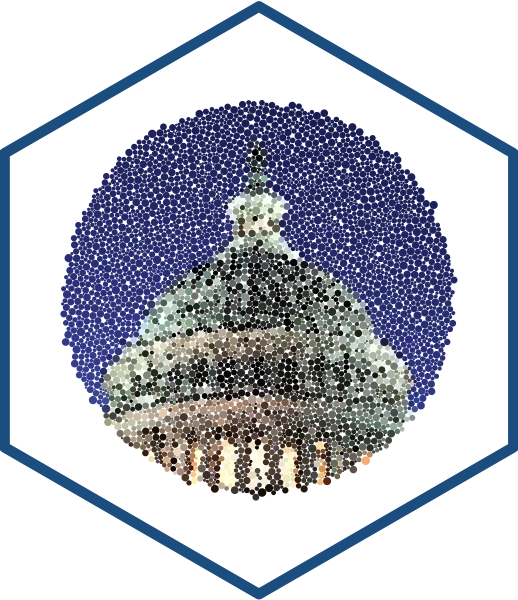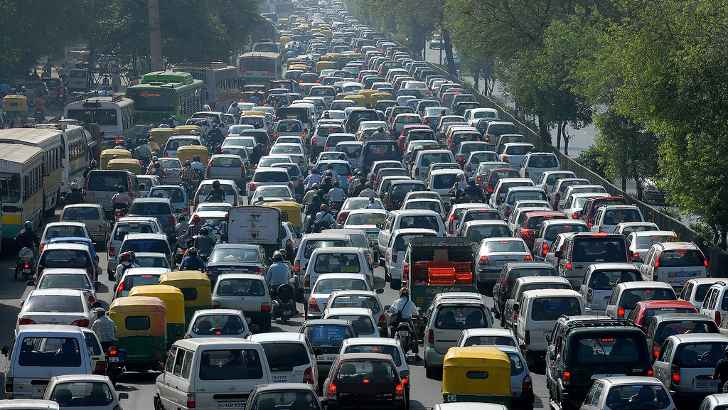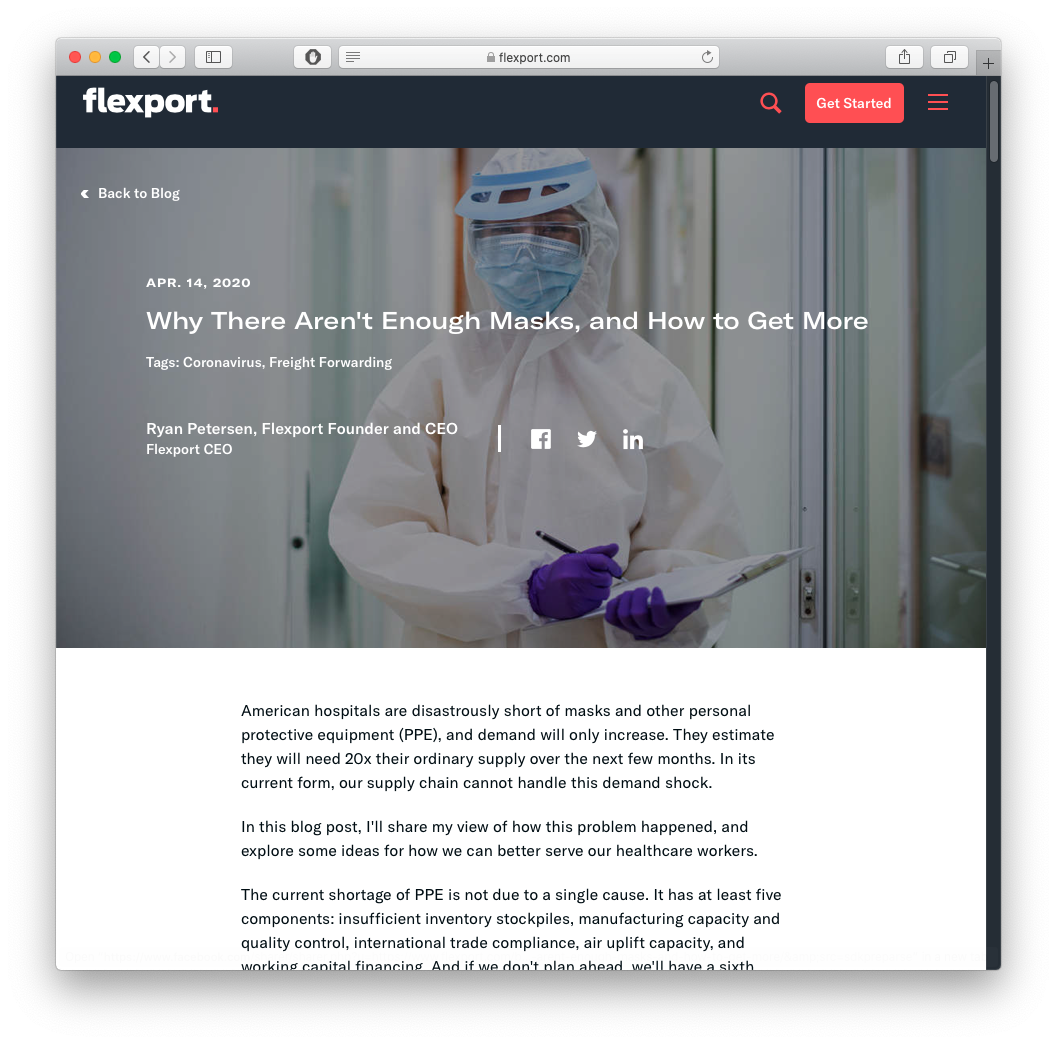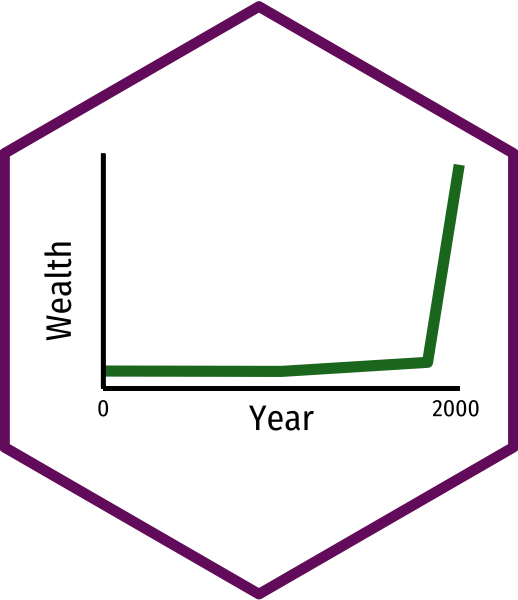3.5 — Introduction to Political Economy
ECON 306 • Microeconomic Analysis • Spring 2023
Ryan Safner
Associate Professor of Economics
safner@hood.edu
ryansafner/microS23
microS23.classes.ryansafner.com
Welfare Economics, Reminder
Markets are great when:
- They are Competitive: many buyers and many sellers
- They reach equilibrium (prices are free to adjust): absence of transactions costs or policies preventing prices from adjusting to meet supply and demand
- There are no externalities†: costs & benefits are fully internalized by the parties to transactions
Market failure: if these conditions are not met
- May be role for governments, other institutions, or entrepreneurs to fix

† Or public goods, or asymmetric information. But I treat these as special cases of more common externalities.
Policies That Raise Transaction Costs & Prevent Equilibrium
Dis-equilibrated Markets
The static benefits of markets all come from markets being in equilibrium (class 3.3):
- allocative efficiency (CS+PS)
- Pareto efficiency
- productive efficiency
But don’t forget the dynamic benefits of markets as a discovery process! (class 3.4)
- discovery of better allocations of resources
- creation & elimination of profit opportunities
- entrepreneurship & innovation

Dis-equilibrated Markets
To reach equilibrium, market prices need to be able to adjust
- Shortage (Qs<Qd): price needs to rise
- Surplus (Qs>Qd): price needs to fall
There are unrealized gains from trade that exist in disequilibrium (shaded)
- Buyers & sellers both can be made better off if they can adjust the price

Dis-equilibrated Markets
If market prices are prevented from adjusting, shortage/surplus becomes permanent
Lost CS and/or PS: Deadweight loss (DWL)
- inefficiency created by (permanent) diseq.
Various government policies can prevent markets from equilibrating & create DWL:
- Price regulations (price ceiling like rent control, price floor like minimum wage)
- Taxes, subsidies, tariffs, quotas†
- These should have been covered in Principles (see my slides on taxation from ECON 410)
† Some may be necessary (taxes fund government), but create market inefficiencies.

An Example: Some Economic Impacts of Covid
An Example: Some Economic Impacts of Covid

The toilet paper aisle of my Giant grocery store, March 2020
Where did all of the ... go?
- Toilet paper
- Hand sanitizer
- Masks
- PPE
- Ventilators
Three major issues:
- price elasticity of supply
- price gouging laws
- restrictions & regulations on supply
Increase in Demand
- Consider a market for a good in equilibrium, P1

Increase in Demand
More individuals want to buy more of the good at every price
Demand increases, becomes less elastic

Increase in Demand
More individuals want to buy more of the good at every price
Demand increases, becomes less elastic
At the original market price, a shortage! (qD>qS)

Increase in Demand
More individuals want to buy more of the good at every price
Demand increases, becomes less elastic
At the original market price, a shortage! (qD>qS)
Sellers are supplying Q1, but some buyers willing to pay more for Q1

Increase in Demand
More individuals want to buy more of the good at every price
Demand increases, becomes less elastic
At the original market price, a shortage! (qD>qS)
Sellers are supplying Q1, but some buyers willing to pay more for Q1
Buyers raise bids, inducing sellers to sell more
Reach new equilibrium with:
- higher market-clearing price (P2)
- larger market-clearing q. exchanged (Q2)

One Possibility: Inelastic Supply
It might that supply is very inelastic
- Here: perfectly inelastic (for convenience)
Suppliers can’t produce and sell more units even if they want to at very high price demanded
- sudden shock to inventories (short run)
- rising production costs
- government regulations & restrictions
Thus, the new high price is an equilibrium that will persist for a while
- no “inefficiency,” just a fixed supply of goods we cannot easily change

Price Gouging Laws
Additionally, government has anti-price-gouging laws, a price ceiling at the original price, P1
Qd>Qs: excess demand, a shortage!
Sellers will not supply more than Q1 at price ¯P1

Price Gouging Laws
Additionally, government has anti-price-gouging laws, a price ceiling at the original price, P1
Qd>Qs: excess demand, a shortage!
Sellers will not supply more than Q1 at price ¯P1
For Q1 units, buyers are willing to pay PD!

Price Gouging Laws
If prices were allowed to adjust: buyers would bid higher prices to get the scarce Qs goods
Sellers would respond to rising willingness to pay, and produce and sell more
But the price is not allowed to rise above ¯P1!

Price Gouging Laws
- Official price is P1, sellers gain monetary revenues

Price Gouging Laws
Official price is P1, sellers gain monetary revenues
Competition exists between buyers to obtain scarce Qs goods
- Buyers willing to pay PD unofficially
Goods are distributed by non-market means:
- Queuing
- Black markets
- Political connections, favors, corruption
Economic rents: excess returns (above opp. cost) to those who own the scarce goods

(Temporarily) Raising Prices Can Solve the Shortage

A relatively high price:
Conveys information: good is relatively scarce
Creates incentives for:
- Buyers: conserve use of this good, seek substitites
- Sellers: produce more of this good
- Entrepreneurs: find substitutes and innovations to satisfy this unmet need
(Temporarily) Raising Prices Can Solve the Shortage
"The Canadian National Post, citing the Canadian Food Inspection Agency, says that 'There are no shortages or disruptions to [food] production, importation or export,' and that 'the shelves remain stocked.' ... 'A price surge as a result of natural market forces is not something that is regulated by Canadian competition laws or otherwise. Canada’s competition laws generally don’t interfere with the free market.' ... Canadians will have enough food to eat. But it will be more expensive.
(Temporarily) Raising Prices Can Solve the Shortage
A supermarket in Denmark got tired of people hoarding hand sanitizer, so came up with their own way of stopping it.
— Birger (@Birger_s) March 18, 2020
1 bottle kr40 (€5.50)
2 bottles kr1000 (€134.00) each bottle.
Hoarding stopped!#COVID19 #Hoarding pic.twitter.com/eKTabEjScc (via @_schuermann) cc @svenseele
Supply-Side Restrictions & Regulatory Burden
"As the nation’s economy and health-care system struggle to adjust to the pandemic, more and more states are reexamining some of their oldest occupational and business regulations—rules that, although couched as protecting consumers, do far more to limit competition...While some states have ordered their occupational-licensing boards to speed up the licensure of new health-care practitioners, others...are granting immediate licensing reciprocity to any practitioner licensed in any state...Even Florida, which has long jealously guarded its occupational-licensing regime to prevent semiretired snowbirds from poaching on the locals’ turf, [is] allowing out-of-state health-care providers to practice telemedicine in the state without a license."
Supply-Side Restrictions & Regulatory Burden
"Illinois has waived licensure fees for retired medical practitioners who wish to resume practice. Oklahoma and Massachusetts have eliminated restrictions that required doctors to have a preexisting doctor-patient relationship before they could offer telemedicine services."
Supply-Side Restrictions & Regulatory Burden
"Also being reexamined are state certificate-of-need, or CON, laws. A product of 1970s-era economic regulation, CON laws require health-care providers to prove that new services are “needed” before they may purchase certain large equipment, open new or expanded facilities, or—as is crucial now—offer home health-care services. Often, these laws give an effective veto power to existing medical providers, allowing them to torpedo new competition for their own benefit...Basic economics predicts that competition reduces prices for consumers, and occupational licensing works directly to stifle competition."
Supply-Side Restrictions & Regulatory Burden
"The University of Minnesota economist Morris Kleiner, a leading researcher on occupational licensing, estimates that licensing costs consumers nearly $200 billion annually. This might be justifiable if licensing produced substantial improvements in quality, yet most research has failed to find a connection between licensure and service quality or safety."
Supply-Side Restrictions & Regulatory Burden
How did the U.S. government only manage to produce a fraction as many testing kits as its peer countries? There have been three major regulatory barriers so far to scaling up testing by public labs and private companies: 1) obtaining an Emergency Use Authorization (EUA); 2) being certified to perform high-complexity testing consistent with requirements under Clinical Laboratory Improvement Amendments (CLIA);...
Supply-Side Restrictions & Regulatory Burden
...and 3) complying with the Health Insurance Portability and Accountability Act (HIPAA) Privacy Rule and the Common Rule related to the protection of human research subjects. On the demand side, narrow restrictions on who qualified for testing prevented the U.S. from adequately using what capacity it did have.
Supply-Side Restrictions & Regulatory Burden
Honestly, I’m not sure people completely understand how small distilleries, generally with VERY little capital on hand, are changing their business models in just a week. We appreciate the outpouring of love. We’re working like crazy to get what we need to make more sanitizer.
— Skip Tognetti (@togneter) March 25, 2020
Supply-Side Restrictions & Regulatory Burden
There is literally no medical reason to denature. Taxation. That’s it.
— Skip Tognetti (@togneter) March 25, 2020
In WA, that means if I sell a liter for $10, which I’m barely covering my costs on, the tax owed between state and federal governments is EIGHT DOLLARS AND TWENTY THREE CENTS.
And yet...
Making Fair Comparisons
Government Failure & Market Failure
We've talked about market failure under certain conditions
However there is also government failure
- corruption, rent-seeking, voter ignorance, voter irrationality, special interest groups, regulatory capture
So stop comparing ideal institutions in theory and see how they work in practice
Learn more in my Public Economics course


Economic Theory Assumes Good Institutions
Markets & price theory: how consumers & producers specialize, produce, & exchange within given, well-functioning markets (& politics)
Assumes existence of "good" economic & political institutions that facilitate market exchange
- low transaction costs
- clear and enforced property rights
- rule of law
- contract enforcement
- capable, high-capacity, non-corrupt government
- dispute resolution
- high level of social trust

Two Fundamental Problems of Political Economy
- All societies face two fundamental problems, which institutions emerge (or are created) to address:
The Knowledge Problem: How to coordinate the tacit, fragmented knowledge of opportunities and conditions dispersed across millions of individuals (and accessible to none in total) in order to maximize the ability of individuals to achieve their goals
Two Fundamental Problems of Political Economy
- All societies face two fundamental problems, which institutions emerge (or are created) to address:
The Knowledge Problem: How to coordinate the tacit, fragmented knowledge of opportunities and conditions dispersed across millions of individuals (and accessible to none in total) in order to maximize the ability of individuals to achieve their goals
The Incentives Problem: How to structure incentives that individuals face in a way that maximizes cooperative behavior (voluntary exchange and association) and minimizes non-cooperative behavior (cheating, opportunism, exploitation, violence, rent-seeking)
Robust Political Economy
No system is perfect
We need to find arrangements that are robust to knowledge & incentive problems
Easy (unpersuasive) case: perfect information & pure benevolence
- every system works in theory!
Hard (persuasive) case: uncertainty & selfish behavior
- what works best in practice?
Treat people as they are: sometimes good, bad, smart, stupid, opportunistic, altruistic, depending on the institutions they face!

Robust Political Economy

A Bad Argument for Markets
A Better, Comparative, Argument for Markets
Robust Political Economy
People often recommend optimal policies as if they could be installed by a benevolent dictator
- A dispassionate ruler with total control, perfect information, and selfless incentives to implement optimal policy
- A “1st-best solution”
In reality, 1st-best policies are distorted by the knowledge problem, the incentives problem, and politics
- Real world: 2nd-to-nth-best outcomes

Comparative Institutional Analysis
Compare imperfections of feasible and relevant alternative systems
- The “Nirvana Fallacy”: comparing an imperfect system in reality with an ideal system in theory
Economics: think on the margin!
- One system's “failure” does not automatically imply another will be “successful”!
- Real world requires tradeoffs
- “economics puts parameters on people's utopias”
- “compared to what?”

Institutions: Operationalizing Adam Smith

Adam Smith
1723-1790
“[Though] he intends only his own gain, and he is in this, as in many other cases, led by an invisible hand to promote an end which was no part of his intention...By pursuing his own interest he frequently promotes that of the society more effectually than when he really intends to promote it,” (Book IV, Chapter 2.9).
Smith, Adam, 1776, An Enquiry into the Nature and Causes of the Wealth of Nations
Self-Interest Doesn’t Always Benefit Society


Institutions: Operationalizing Adam Smith

“[Though] he intends only his own gain, and he is in this, as in many other cases, led by an invisible hand to promote an end which was no part of his intention...By pursuing his own interest he frequently promotes that of the society more effectually than when he really intends to promote it,” (Book IV, Chapter 2.9).
Smith, Adam, 1776, An Enquiry into the Nature and Causes of the Wealth of Nations
Institutions: Operationalizing Adam Smith

"[Though] he intends only his own gain, and he is in this, as in many other cases, led by an invisible hand to promote an end which was no part of his intention...By pursuing his own interest he frequently promotes that of the society more effectually than when he really intends to promote it," (Book IV, Chapter 2.9).
Smith, Adam, 1776, An Enquiry into the Nature and Causes of the Wealth of Nations
A Logical Framework for Political Economy

- Outcomes:
- relative level of wealth or poverty
- relative level of equality or inequality
- stability of politics, finance, macroeconomy
A Logical Framework for Political Economy

- Outcomes:
- relative level of wealth or poverty
- relative level of equality or inequality
- stability of politics, finance, macroeconomy
- ...are determined by Incentives:
- relative prices or costs of various choices
- profits and losses
- information
A Logical Framework for Political Economy

- Outcomes:
- relative level of wealth or poverty
- relative level of equality or inequality
- stability of politics, finance, macroeconomy
- ...are determined by Incentives:
- relative prices or costs of various choices
- profits and losses
- information
- ...are determined by Institutions:
- allocation of rights, property, & power
- (in)equality before the law or corruption
- constraints on politics and economics
A Logical Framework for Political Economy

- Outcomes:
- relative level of wealth or poverty
- relative level of equality or inequality
- stability of politics, finance, macroeconomy
- ...are determined by Incentives:
- relative prices or costs of various choices
- profits and losses
- information
- ...are determined by Institutions:
- allocation of rights, property, & power
- (in)equality before the law or corruption
- constraints on politics and economics
- ...are determined by Ideas:
- political and social worldview -"isms"
- which groups (should) have status
- moral and social norms
What are Institutions?

Douglass C. North
1920-2015
Economics Nobel 1993
“Institutions are the humanly devised constraints that structure political economic and social interaction. They consist of both informal constraints (sanctions, taboos, customs, traditions, and codes of conduct), and formal rules (constitutions, laws, property rights),” (p.10)
“Institutions are the rules of the game in a society,” (p.1).
North, Douglass C, (1991), "Institutions," Journal of Economic Perspectives 5(1): 97-112.
North, Douglass C, (1990), Institutions, Institutional Change, and Economic Performance
Incentives are Structured by Institutions

“Who needs this nail?”
“Don't worry about it! The main thing is that we immediately fulfilled the plan for nails!”
Institutions Channel Entrepreneurship

William Baumol
1922-2017
"If entrepreneurs are defined, simply, to be persons who are ingenious and creative in finding ways that add to their own wealth, power, and prestige, then it is to be expected that not all of them will be overly concerned with whether an activity that achieves these goals adds...to the social product," (pp.897-898).
"The rules of the game that determine the relative payoffs to different entrepreneurial activities do change dramatically from one time and place to another. Entrepreneurial behavior changes direction from one economy to another in a manner that corresponds to the variations in the rules of the game," (p.898).
Baumol, William J, (1990), "Entrepreneurship: Productive, Unproductive, and Destructive," Journal of Political Economy 98(5): 893-921
Profit Seeking and Rent Seeking

Productive entrepreneurship
Profits from serving customers

Unproductive entrepreneurship
Rents from political privileges

Destructive entrepreneurship
Loot from theft and violence
A Parting Note on Political Economy

Thomas Sowell
1972-
“The first lesson of economics is scarcity: There is never enough of anything to satisfy all those who want it. The first lesson of politics is to disregard the first lesson of economics.”
“There are no solutions, there are only tradeoffs.”














